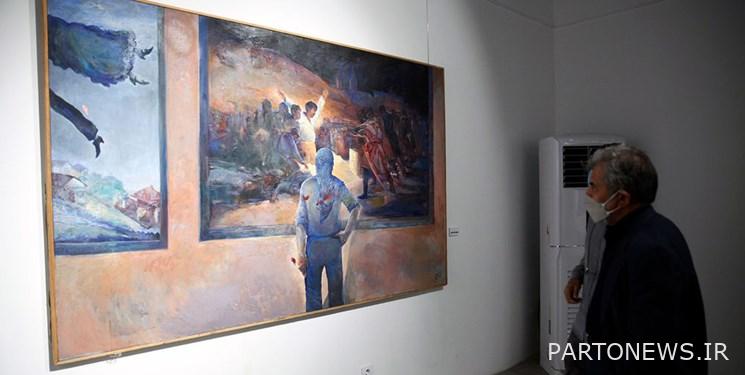An exhibition of selected works of Habibollah Sadeghi in the field of art / in search of the gem of the truth of art

According to the visual arts correspondent of Fars news agency, an exhibition of Habibullah Sadeghi’s works was opened in the art gallery on Monday, August 10th. For this reason, in this report, we will try to look at the works of this great artist of the Islamic Revolution from a new angle.
If we are to choose the works of artists based on the indicators of the theory of Islamic revolution, without a doubt the paintings of Habibullah Sadeghi are among the most important. Sadeghi’s works are not only a reflection of the historical developments of the Islamic Republic, but also offer a systematic and persuasive self-explanation of Islamic teachings and the theories of the Islamic Republic.
In addition to this world and world of content, from an aesthetic point of view, most of Sadeghi’s works show a painterly approach.
Perhaps, Shahid Avini can be considered the closest artist to the art world and Sadeghi’s values and attitude, obviously the rejection of Avini’s theories about art can be seen in the works of this great painter. Avini considers graphics to be the birth of a new human civilization, which is the precursor to the advent of printing technology. He also introduced the main use of this art as role-playing in advertisements and for the commercial purposes of the bourgeoisie and capitalism, which has changed due to recent conditions.
According to the Fars axis report, one of Avini’s articles is the birth of graphics from the modern culture of the West. In this article, it is written that in the atmosphere of modern culture, graphics either tend to be popularized and exploited by commercial advertisements or become the monopoly of intellectuals and its connection with the people is cut off. But in revolutionary conditions and in conditions where art is freed from both populism and elitism, it flourishes.
According to Shahid Avini, this happened in Iran after the Islamic revolution: “The cultural, political and social attractions of the revolution, both negative and positive, have brought art to the stage of action in all fields, and it has been transformed from a depressed, indifferent, selfish atmosphere. , the intellectual and westernist before the revolution.
In fact, just as Shahid Avini was against the dichotomy of commercial film and intellectual film in the field of cinema and was looking for a third way emerging from authentic Iranian culture and values, he also had this view in the field of visual arts: “Artists, by being freed from belonging Rightly, they should establish that new covenant either with the society or with themselves, which the first way is “to art for the people” and the last way is to “art for art’s sake” and in both ways art will die.
From Shahid Avini’s point of view, there is also a third way, apart from populism and elitism. “Infatar face”, which is interpreted as splitting the appearance, is the third way; The way that artists pass through superficial pretense and pride and reach the true essence of art.

Habibullah Sadeghi’s paintings can be seen as the manifestation of this theoretical basis that is rooted in the Islamic Revolution. Because both the artist and his works of art have gone beyond pretense and superficial boasting. Sadeghi’s works, such as Avini’s third path, do not give in to popularization and are not caught up in elitism.

From another point of view, Martyr Avini describes true art with inspiration from Islamic teachings as being in complete harmony with human nature and truth. Who does not know that all of Sadeghi’s works are devoted to Islamic teachings.
Avini says: “Art is the mania of truth, along with the power to express that mania, and an artist is someone who, in addition to the mania of truth, has also received the power to express it from God Almighty. If each of these two – the mania of right and the power of expression – has a defect, the work of art will not be created. … the necessary principle of mania is the right, and the power of expression is a sufficient condition”. He writes in another place: “Art is the memory of heaven and the lamentation of man in parting.” Art is the language of the sojourn of the people of Adam in the Dar al-Qar group, and therefore, everyone has a connection with it, whether it is expressed in words, in tone, or in role; It is as old as the world. Art is a language without a language and language is a language.”
In the end, it is quite clear that Sadeghi’s paintings seem to be the manifestation of the theories of Martyr Avini, and without a doubt, the comparative study of the works of these two great artists can draw a clear and accurate future for the art of the Islamic Revolution.
In the final analysis, it may not be out of place if we use a metaphorical language to promote the art of the Islamic Revolution as two wings of flight; One wing of the theories of Martyr Avini and the other wing of Habibullah Sadeghi’s practical works and paintings, it seems that this could be the third way, based on the statement of the second step of the Islamic Revolution, artists can light the way.





end of message/
You can edit this article
Suggest this article for the first page

